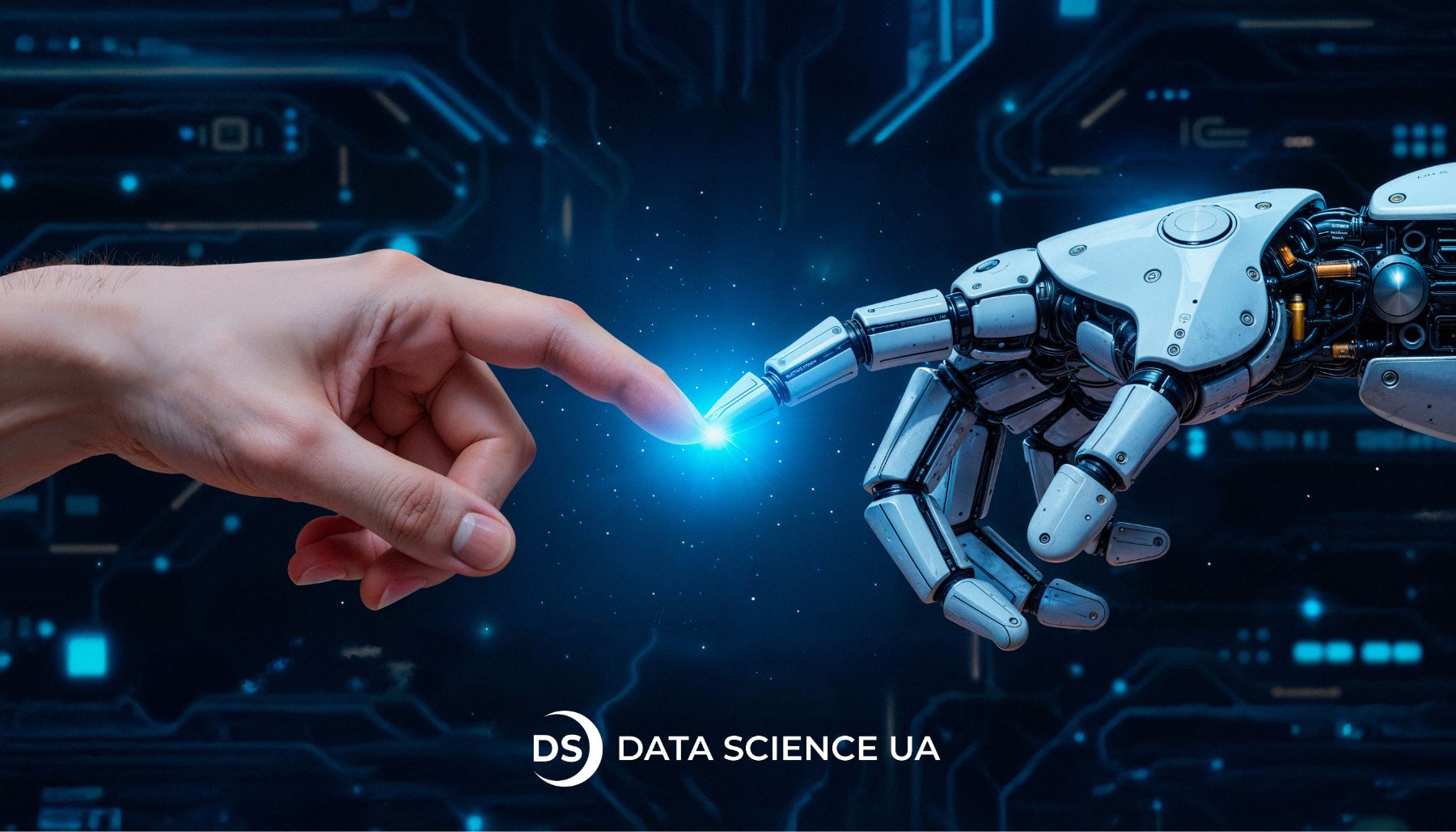Key overview about AI and ML
In the world of AI and machine learning, data annotation plays a critical role in enabling machines to understand and interpret various types of data. Data annotation involves the process of categorizing and labeling data with relevant tags, which serves as a foundation for training supervised machine learning models. And what is labeling data means exactly? It is an essential step to mimic human behavior and decision-making in AI applications. Through data annotation, machines can recognize patterns, make predictions, and perform tasks with accuracy and efficiency.
Data annotation meaning is commonly used in various domains, such as computer vision, challenges in natural language processing (NLP), speech recognition, and more. The process involves adding meaningful metadata to the data, making it easier for machines to comprehend and process information. High-quality data annotation is crucial for enhancing customer experience solutions, search engine results, product recommendations, chatbots, and other AI-driven applications. Data Science UA provides different types of solutions.
Types of Data Annotation Techniques
What are the different types of annotations?
Image Annotation
- Data annotation meaning in image annotation is a fundamental technique in computer vision applications. It involves labeling objects or regions within an image, providing valuable insights for object detection, recognition, and segmentation. Different methods of image annotation include bounding boxes, which define the location of the target object, polygonal segmentation for precise shape definition, and semantic segmentation, which assigns every pixel in the image to a specific class.
Text Annotation
- Text annotation is essential for natural language processing solutions, enabling machines to read, understand, and analyze human language accurately. This type of annotation involves tagging metadata to highlight keywords, phrases, sentiments, and other linguistic elements in the text. Text annotation is particularly important for sentiment analysis, intent recognition, and text categorization. High-quality text data is crucial for training AI models effectively and ensuring clarity and context in machine responses.
Semantic Annotation
- What is annotating data meaning when it comes to semantic annotation? Semantic annotation is a specialized technique that improves product listings and search relevance. It involves annotating data with semantic labels, allowing machines to understand the meaning and context of the information. Semantic annotation enhances the accuracy of AI applications, making them more efficient in delivering relevant results to users.
Intent Annotation
- Intent annotation is a significant part of natural language processing, as it helps machines understand user intentions behind their queries or interactions. By annotating data with user intents, AI models can provide more accurate and relevant responses, leading to an improved user experience.
Sentiment Annotation
- What is an annotation example in sentiment annotation? Sentiment annotation involves labeling data to assess attitudes and emotions expressed in texts, reviews, or social media posts. Data annotation examples lie in understanding customer feedback, market sentiment, and public opinion. By accurately identifying sentiments, businesses can make data-driven decisions and enhance their products or services.
Audio Annotation
- Audio annotation involves labeling audio data, enabling machines to recognize speech and sound patterns. This technique is crucial in speech recognition and other audio-based applications, where machines need to understand and process spoken language.
Video Annotation
- Video annotation is the process of labeling objects, actions, or events within a video. It is vital for video understanding and various computer vision applications, including surveillance, autonomous vehicles, and video analysis.
Named Entity Annotation
- Named Entity Annotation is the process of identifying and categorizing named entities in text, such as names of people, organizations, locations, dates, etc. This information is valuable for tasks like information extraction, knowledge graph construction, and entity recognition.
Text Categorization
- Text categorization involves assigning pre-defined categories or tags to text data. It is widely used in document classification, content filtering, and topic modeling.
LiDAR Annotation
- LiDAR annotation is essential in autonomous driving and robotics applications. It involves annotating point cloud data obtained from LiDAR sensors, enabling machines to perceive their surroundings accurately.
PDF Annotation
- PDF annotation is the process of adding metadata or labels to data contained in PDF documents. It aids in extracting information and making it machine-readable.
Website Annotation
- Website annotation involves labeling web data for various purposes, such as web scraping, search engine optimization (SEO), and content categorization.
Time Series Annotation
- Time series annotation is critical for tasks involving sequential data, such as stock market prediction, weather forecasting, and trend analysis.
How to do data annotation?
Data annotation is a critical process in the development of AI and machine learning models. It involves the labeling and categorization of raw data, such as images, text, audio, and videos, to provide meaningful context for AI algorithms. Annotated data serves as the foundation for training supervised learning models, enabling them to make accurate predictions and perform specific tasks effectively. In this guide, we will walk you through the step-by-step process of how to do data annotation, ensuring that your AI projects are built on high-quality labeled datasets.
Step 1: Data Collection
The first phase of data annotation is data collection. It involves gathering raw data that will serve as the basis for your AI model training. Depending on your specific AI project, you may collect images, audio files, text documents, or videos. The quality and relevance of the data you collect will significantly impact the performance of your AI model, so ensure that you have a diverse and representative dataset. Refer to optical character recognition services to know more.
Step 2: Data Preprocessing
Before diving into data annotation, it’s crucial to preprocess the collected data. Data preprocessing involves cleaning the data, handling missing values, and standardizing the format. Ensure that the data is in a consistent and usable state, as this will simplify the annotation and lead to more accurate results.
Step 3: Select the Data Annotation Tool
Choosing the right data annotation tool is paramount to streamline the annotation and ensure efficiency. There are various data annotation tools available, each catering to different data types and annotation tasks. Consider the types of annotations you require, such as bounding boxes, polygons, sentiment labels, etc., and choose a tool that supports your specific needs.
Step 4: Annotation Guidelines
Annotation guidelines are essential for maintaining consistency and accuracy throughout the annotation. These guidelines provide clear instructions to annotators on how to label the data, ensuring that the annotations align with your project’s objectives. Clear and detailed guidelines are crucial for avoiding ambiguity and discrepancies in the annotations.
Step 5: Annotation
With your data annotation tool and guidelines in place, it’s time to start the annotation. This phase involves human annotators manually adding labels and categories to the data based on the provided guidelines. Annotators play a vital role in ensuring the quality of annotations, making it essential to choose skilled and experienced professionals for the task.
Step 6: Quality Control
Quality control is a crucial step in data annotation, as it helps identify and rectify any inconsistencies or errors in the annotations. Implement a robust quality control process to review a subset of annotated data for accuracy and adherence to guidelines. This iterative process ensures that the final annotated dataset is of high quality and reliability.
Step 7: Data Export
Once the annotation and quality control are complete, it’s time to export the annotated data. Ensure that the data is in a format compatible with your AI model training pipeline. The annotated dataset is now ready to be used for training your AI or machine learning model.
Data annotation is a labor-intensive process that requires meticulous attention to detail and skilled human annotators. However, the importance of data annotations cannot be overstated, as they directly influence the performance and accuracy of AI models. By following the step-by-step guide on how to annotate data, you can ensure that your AI projects are built on reliable and high-quality labeled datasets, leading to more robust and effective AI applications.
Data Annotation Tools and Software
Data annotation services is becoming increasingly important in the field of machine learning and artificial intelligence. While human annotation can be time-consuming and expensive, which is why data annotation tools and software have emerged as a valuable alternative.
What is data anotation and what key steps does it include?
- Choosing the annotation type: Selecting the annotation type for the given data, such as image segmentation, audio transcription, object detection, or text classification.
- Labeling the data: The annotations themselves, such as keywords, tags, or other information that identifies the data elements’ meaning.
- Review and Quality Check: It is essential to validate annotations for accuracy and consistency to ensure annotated data’s quality and enable efficient machine learning model creation.
- Iterative Feedback: Feedback from machine learning models can be used to improve annotations’ quality to enhance the model’s accuracy over time.
Why are Annotations Important?
What is and why is data annotation important in AI? Annotations play an essential role in machine learning and AI development. Without accurate and relevant annotations, these models’ effectiveness and accuracy are significantly diminished. As the foundation of supervised learning, annotations enable machine learning models to learn patterns and recognize various data significance. Properly annotated data leads to more accurate and efficient algorithms that improve decision-making and problem-solving. Additionally, annotations enable businesses to establish competitive advantages through made to purpose AI applications more efficiently.
Annotation Tools and Software
There are many annotation tools and software available today, ranging from simple and affordable to sophisticated and expensive packages suited for complex datasets. Here are some examples:
- Labelbox: Labelbox is a cloud-based platform that enables teams to create precise annotations of data with an intuitive interface.
- Amazon SageMaker Ground Truth: Amazon SageMaker Ground Truth is a fully-managed data labeling service for creating high-quality labeled datasets and building accurate machine learning models.
- Supervisely: Supervisely is an all-in-one platform enabling computer vision engineers to annotate data in nearly all types of tasks including object detection, segmentation, classification, and more.
- Countify.ai: An AI-based data annotation software which uses image and video annotation for various purposes like object detection, object classification, keyframe extraction, etc.
Benefits of Automated Data Annotation: Empowering AI Development
In the fast-paced world of data science and computer vision development services, the demand for accurate and efficient data annotation is greater than ever. Manual data annotation has long been the traditional approach, but emerging technologies have paved the way for an alternative: Automated Data Annotation. This article will explore the benefits of adopting automated data annotation, revolutionizing the field and empowering organizations to achieve better results.
Cost-Effective Annotation
One of the undeniable advantages of automated data annotation is its cost-effectiveness. The traditional approach typically involves hiring a team of experienced annotators, which can be expensive and time-consuming. Automatic data annotation dramatically reduces these costs by leveraging machine learning algorithms and software tools to label data swiftly and accurately. By streamlining the process and eliminating the need for extensive human resources, organizations can allocate their budget more efficiently, saving substantial resources in the long run.
Faster Annotation Turnaround Time
In the ever-competitive landscape of AI development, speed is essential. Manual data annotation can be a lengthy and labor-intensive process, especially for large datasets. However, with automated data annotation, organizations can significantly reduce the annotation turnaround time. By utilizing advanced algorithms and software, data can be labeled in a fraction of the time it would take a human annotator. This accelerated process allows organizations to capitalize on their data faster, enabling quicker iterations, and ultimately speeding up the development of AI models.
Consistent and Objective Results
Annotating data manually leaves room for inconsistencies and subjective interpretation, which can have a detrimental impact on the accuracy and reliability of AI models. On the other hand, automated data annotation ensures consistent and objective results by adhering to predefined algorithms and rules. By eliminating human bias and relying on standardized processes, organizations can generate annotations that are reliable, reproducible, and uniform. This consistency translates to better training data for AI models, leading to more robust and accurate predictions.
Increased Productivity and Scalability
What is annotated data scalability? The scalability of data annotation is often a significant challenge for organizations.
What does annotating data mean when it comes to building an annotation team? Hiring and training a large team of qualified annotators can be a cumbersome process. Fortunately, automated data annotation offers a solution by enabling increased productivity and scalability. Leveraging machine learning algorithms and software, organizations can process massive amounts of data efficiently and scale their annotation efforts effortlessly. This scalability empowers organizations to tackle larger projects, handle diverse datasets, and accelerate the development of AI models.
Enhanced Efficiency through Technology
Automation enhances efficiency in various ways when it comes to data annotation. Advanced software tools provide intelligent features that aid in the data annotation. These tools offer functionalities such as data visualization, interactive annotation interfaces, and comprehensive labeling frameworks. By utilizing these tools, organizations can streamline the annotation workflow, making it more user-friendly and efficient. Furthermore, these tools can learn from previous annotations, improving over time and further reducing the required effort for ongoing annotation tasks.
What is annotated data when automated and which benefits can it provide businesses with? Automated data annotation stands as a powerful tool, revolutionizing the field of AI development. With benefits ranging from cost-effectiveness and faster turnaround time to consistent results and increased scalability, organizations can unlock the full potential of their data. By embracing automated data annotation, organizations can accelerate their AI development, improve efficiency, and stay ahead in the competitive world of data science.
Best Practices for Data Annotation
The process of data annotation is crucial in developing reliable machine learning models. The accuracy of the model heavily relies on the quality of the annotated data. Data Science UA understands the importance of quality annotations and the role it plays in artificial intelligence development. Therefore, here are some best practices for data annotation applied by Data Science UA. For more info, please, refer to AI development services:
Define the annotation guidelines
To ensure consistent and uniform annotation, it is essential to provide clear guidelines for annotators and to understand what is data labeling in its core. These guidelines should explain the specific task, how to perform it, and the criteria used to judge the quality of the annotation. These guidelines should also adhere to industry standards, depend on the data type, and be reviewed regularly.
Use multiple annotators
Using multiple annotators ensures that the annotations are more accurate and reduce the risk of errors that can lead to poor model performance. Combining multiple annotations also allows experts to review the data to assess the underperformance of specific annotators.
Train the annotators
It is often assumed that data annotation is simple, but it’s not. Annotating data accurately requires skill, experience, and training. Therefore, Data Science UA provides AI development solutions to ensure they are familiar with the annotation guidelines, annotation tools, and the data type.
Challenges and Future Trends in Data Annotation
Annotating data is an expensive and time-consuming process. When it comes to audio annotation services or medical data annotation, the quality of the data needs to be high, and the annotators need to be experts who have a deep understanding of the data. Here are some challenges faced by Data Science UA in data annotation and the future trends that may help overcome them.
Challenges for Data Annotation:
- Cost: Hiring experts for annotation can be expensive and is not always feasible for small businesses.
- Scalability: As the volume of data increases, the number of annotators required also grows, making it time-consuming and expensive to scale.
- Quality: Quality is crucial in annotations for healthcare or audio annotation services. However, establishing what quality is, is difficult, and subjective. This has often resulted in inconsistencies across different annotators.
Future Trends in Data Annotation:
- Semi-Supervised Learning: This reduces the entire labeling process by automating the majority of it.
- Improved Annotation Tools: Improved annotation tools lead to more efficient annotation.
- Data Augmentation: Adding new data to existing data sets helps overcome limitations in data annotations.
Automated data annotation vs. human annotations
Traditionally, human annotations have been the go-to approach, but with the rise of automation, automated data annotation has emerged as a viable alternative. We will delve into what is data labeling, the annotation process, and showcase some of the best data labeling tools and image annotation services in the market.
Annotating Definition: Human Annotations vs. Automated Data Annotation
Human Annotations:
Human annotations involve individuals manually labeling data. This process requires human expertise, attention to detail, and subjectivity. Human annotators rely on their knowledge and judgment to ensure accurate and meaningful annotations. While human annotations offer flexibility and contextual understanding, they can be time-consuming, costly, and prone to inconsistencies.
Automated Data Annotation:
Automated data annotation refers to the use of technology and algorithms to label data automatically. This approach leverages machine learning algorithms to generate annotations efficiently. This process is faster, cost-effective, and offers consistency. However, automated data annotations can be limited by predefined rules and may lack the contextual understanding that human annotators can provide.
Human Annotations Process:
In the human annotation, annotators manually analyze and label data following specific guidelines provided by the organization or project. They carefully review and interpret the data to ensure accurate labeling. This process requires substantial effort, involves a human annotator’s subjectivity and expertise of data science platform development firm, and can be time-consuming, especially for large datasets.
Automated Data Annotation:
Automated data annotation relies on machine learning algorithms and software tools to annotate data automatically. These algorithms are designed to recognize patterns and assign labels based on predefined rules and models. Once the algorithms are trained, they can quickly and accurately label large volumes of data, enabling faster annotation turnaround time and enhanced scalability.
The Benefits and Drawbacks of Human Annotations and Automated Data Annotation
Human Annotations Benefits:
- Contextual Understanding: Human annotators can bring domain expertise and contextual understanding to the annotation.
- Flexibility: Human annotators can adapt to changing requirements and guidelines.
- Subjective Interpretation: Humans possess the ability to interpret ambiguous data and labels based on context.
Human Annotations Drawbacks:
- High Cost and Time-Consuming: Hiring and training human annotators can be expensive and slow down the annotation.
- Inconsistent Results: Human annotators may introduce bias and inconsistencies in the annotations, leading to less reliable models.
- Scalability Challenges: Scaling annotation efforts with a large team of human annotators can be difficult.
Automated Data Annotation Benefits:
- Speed and Efficiency: Automated data annotation can process large volumes of data quickly, significantly reducing the annotation time.
- Cost-Effectiveness: Utilizing automated annotation tools can be more cost-effective in the long run compared to hiring and training a large team of human annotators.
- Consistent and Reproducible: Automated data annotation ensures consistent results, eliminating human bias and subjectivity.
Automated Data Annotation Drawbacks:
- Lack of Contextual Understanding: Automated algorithms may struggle to understand certain data elements that require domain-specific knowledge or complex contextual understanding.
- Rule-based Limitations: The accuracy and reliability of automated annotations rely on the rules and models predefined within the algorithms, leaving room for potential errors or inconsistencies.
- Limited Adaptability: Automated data annotation may not easily adapt to changes in the annotation
Conclusion
In conclusion, data annotation is vital in the machine learning solutions development and artificial intelligence. The annotation enables computers to accurately recognize patterns and improve prediction accuracy. Annotations add value to data, making it more accessible and informative to computers. With the emergence of powerful and easy-to-use data annotation tools and software, annotating data has become easier and more affordable than ever. Today, companies can effectively create accurate and reliable annotations using annotation tools such as Labelbox, Amazon SageMaker Ground Truth, Supervisely, or Countify.ai. By using the right annotation tool and software, developers can train machine learning models and build smarter applications that can make more accurate predictions, solving complex problems, drive business growth, and extract the purpose of annotation from the process.
FAQ
What is annotated data?
Annotated data refers to raw data, such as images, text files, audio, and videos, that have been labeled with additional information or tags. These labels provide context and meaning to the data, making it comprehensible for machine learning algorithms. Annotated data is crucial for training supervised machine learning models, enabling them to make accurate predictions and perform specific tasks effectively.
Who is a Data Annotator?
What does a data annotator do? A Data Annotator is an individual responsible for the data annotation. They play a key role in assigning meaningful labels and categories to raw data, ensuring that the data becomes suitable for training machine learning models. Data annotators use annotation tools and guidelines to accurately label the data and provide the necessary context for AI applications.
What is a data annotation tool?
A data annotation tool is software or a platform designed to facilitate the data annotation. It assists data annotators in efficiently labeling and categorizing various types of data, such as images, text, audio, and video. These tools often provide annotation interfaces, guidelines, and validation mechanisms to ensure high-quality annotations for AI model training.
What are different data annotation use cases?
Data annotation finds applications in various AI domains, including: Computer Vision for annotating images and videos for object recognition, detection, and segmentation, NLP for labeling text data for sentiment analysis, intent recognition, and named entity recognition, Speech Recognition for annotating audio data for accurate speech-to-text transcription and voice recognition.
What are the Advantages of Data Annotation?
The advantages of data annotation in machine learning include: Improved Model Performance, Better Decision Making, Enhanced User Experience, Increased Efficiency.
How can I ensure data security and privacy during the data annotation service?
To ensure data security and privacy during data annotation, consider the following measures:
- Non-Disclosure Agreements (NDAs): Sign NDAs with data annotators and annotation service providers to protect sensitive information.
- Data Masking: Anonymize or mask sensitive data before sharing it with annotators.
- Secure Annotation Environment: Use secure annotation platforms that adhere to data privacy regulations and industry standards.
How do I choose the right data annotation tool for my specific AI project?
To choose the right data annotation tool, consider Data Types, Annotation Features, Scalability and Ease of Use.
Where can I find professional data annotation services for my AI project?
You can find professional computer vision development services at Data Science UA. Data Science UA team has expertise in data annotation, a track record of delivering high-quality labeled datasets, and adherence to data privacy regulations.
Remember, data annotation is a critical step in developing reliable and high-performing AI models, and choosing the right annotation approach and tools is essential for successful AI projects.





